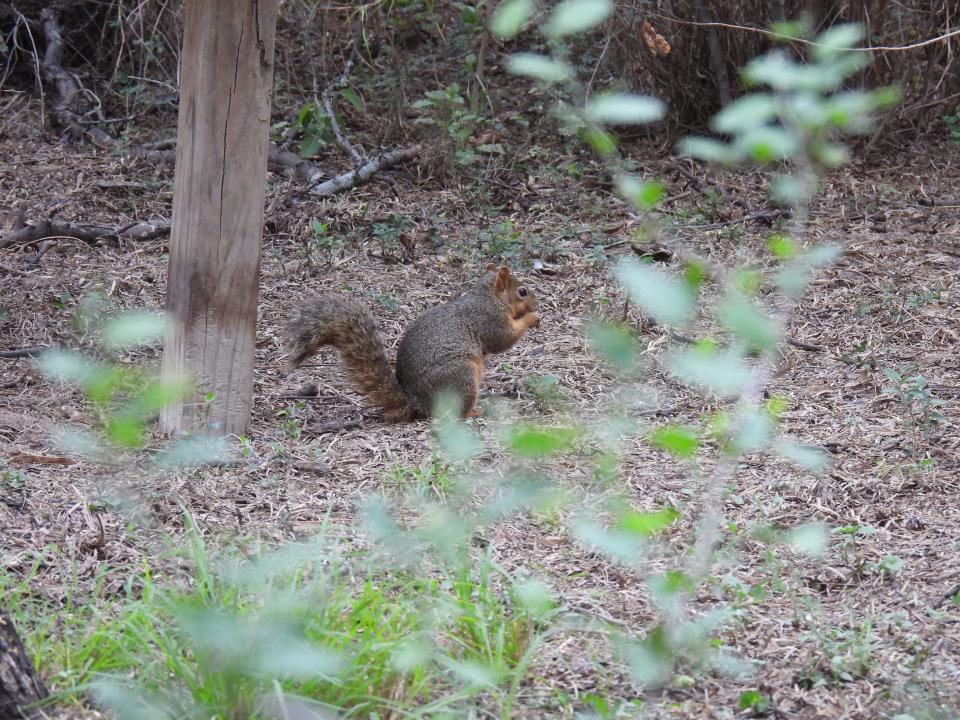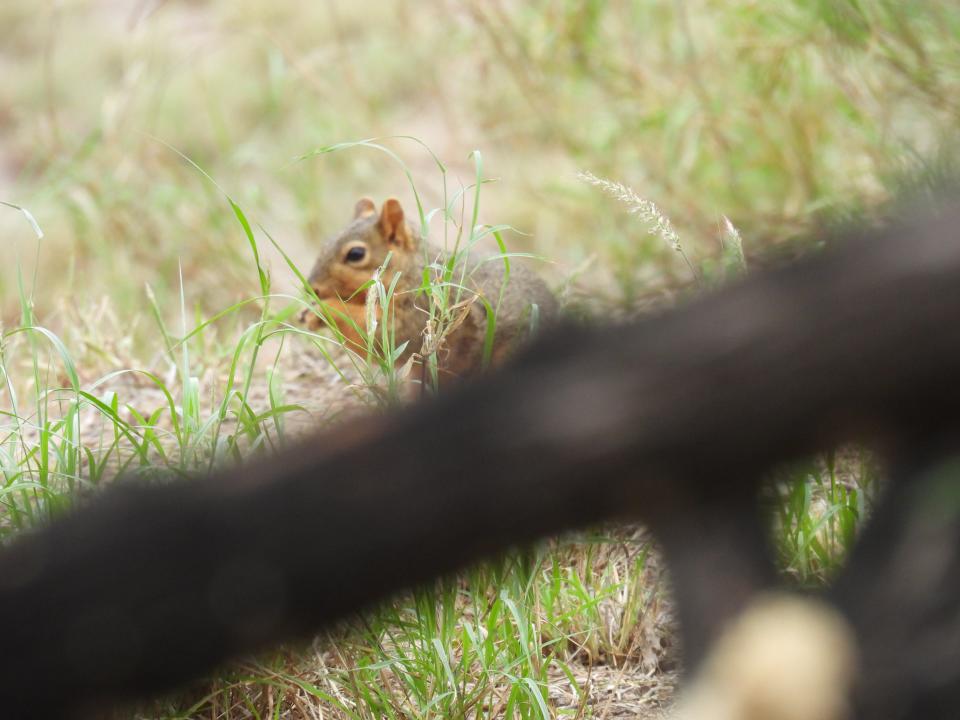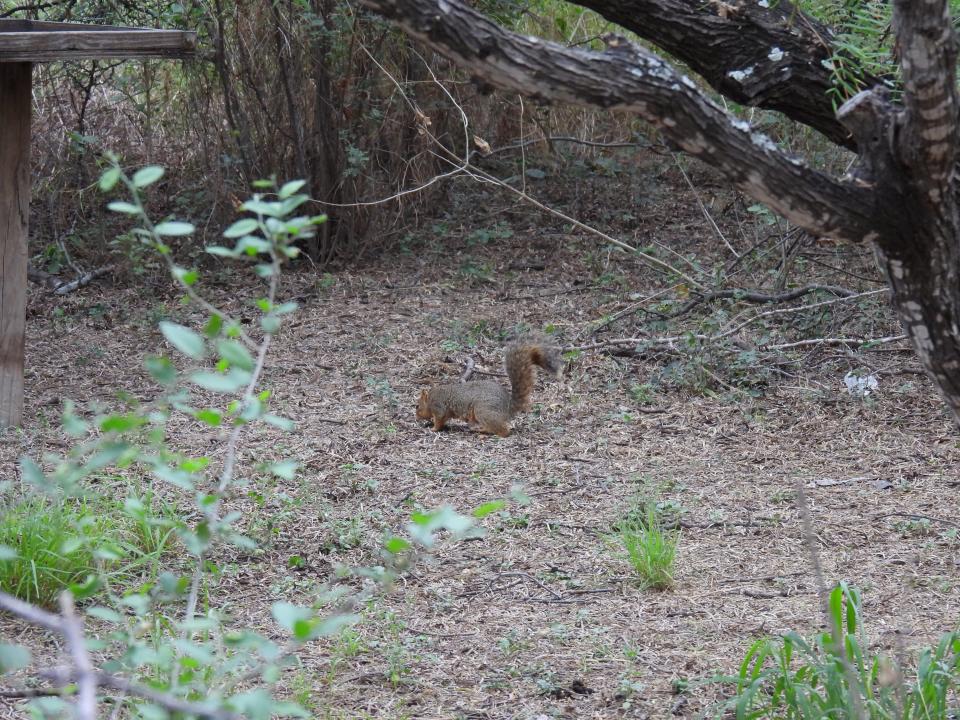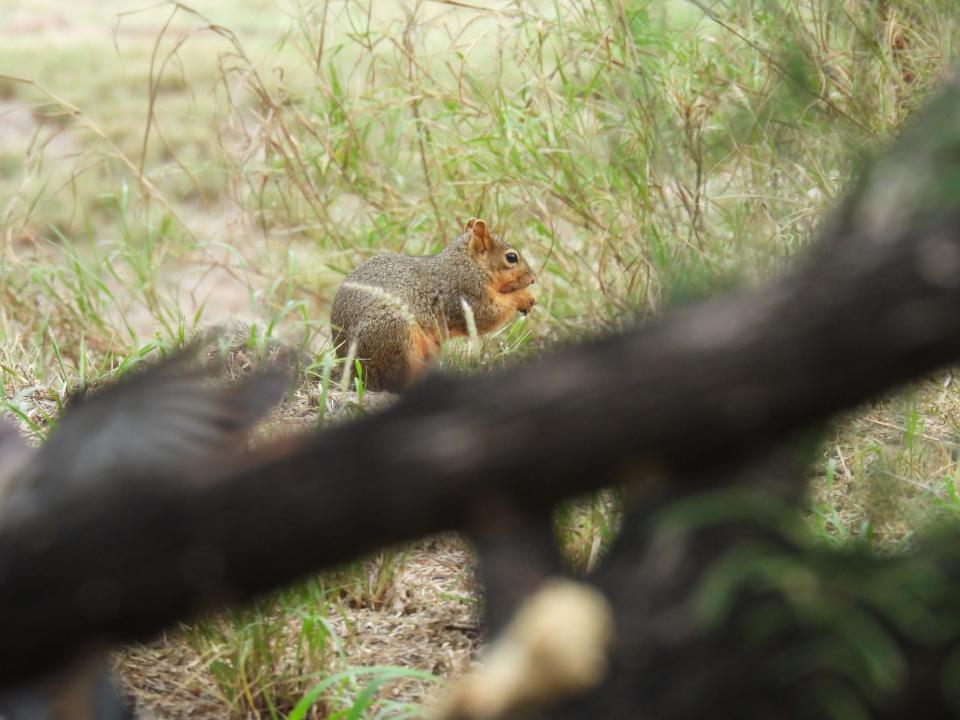Goetze: Day and night squirrels
Whenever most people envision a squirrel, I suspect they have a mental image of the Eastern Fox Squirrel, which occurs throughout Northcentral Texas and Southwestern Oklahoma. However, there is a second species of rarely seen tree-dwelling squirrel, the Southern Flying Squirrel, that is found in appropriate habitats of our eastern counties. In many aspects, these squirrels are as different as day and night and that may be why flying squirrels are rarely reported from our area.

The fox squirrel’s common name is based upon its long, bushy tail that resembles the well-haired, bushy tails of foxes; whereas, the flying squirrel’s name comes from how it moves from place-to-place. The Eastern Flying Squirrel can glide for extended distances (sometimes exceeding 150 feet) between trees but is not capable of true, powered flight.
Both are easily recognized as squirrels but differ in appearance. Eastern Fox Squirrels are much larger (head and body length of 10 to 15 inches and an approximately equal tail length) than Southern Flying Squirrels (head and body length of six inches and tail length of four inches). Fox squirrels have rather stiff body fur; whereas, the fur of flying squirrels is thick, soft, and glossy. The dorsal color of fox squirrels varies from a yellowish-tan color to almost black and its belly, throat, sides, feet, and bottom side of the tail are often an orange or rust color. The flying squirrel is an olive-brown to gray color above with a white belly, throat, and medial sides of the legs. As previously mentioned, the fox squirrel’s tail is bushy and rounded compared to the bushy but distinctly flattened tail of flying squirrels. Both species have large eyes and short ears but the flying squirrel’s eyes appear much larger for its overall size than the eyes of fox squirrels. Additionally, flying squirrels have a very distinctive, black-bordered, flap of skin (referred to as the patagium or gliding membrane) extending along their sides from wrist to ankle. Both squirrels have well-developed claws and long, grasping toes which allow them to cling to trees, wires, brick walls, and other objects and to manipulate foods such as acorns, pecans, nuts, berries, and other items.

Both squirrels are associated with trees and woodlands but there are differences between their preferred habitats. Fox squirrels prefer open, savanna habitats containing clusters of trees with intervening open ground and flying squirrels are most often found in old-growth woodlands with tall trees and/or in heavily wooded, riparian areas along streams, rivers, and marshlands. Fox squirrels spend a great deal of time on the ground foraging and traveling between trees; whereas flying squirrels spend most of their time in the arbors of trees. Activity periods are also different. Fox squirrels are diurnal animals and flying squirrels are most active during nocturnal hours. Both species have similar diets of acorns, pecans, nuts, berries, and insects but, based upon observation and collecting data, flying squirrels seem to have a greater attraction to meat. Both species are known to feed upon eggs, baby birds, and occasionally carrion. Both squirrels hoard food for consumption during winter. Fox squirrels tend to bury nuts, seeds, and food items in shallow, ground larders; whereas, flying squirrels more often cache foods within hollow trees and sometimes abandoned woodpecker holes. Interestingly, in localities where their principle food is acorns, fox squirrels are virtually free of tapeworm and roundworm parasites because of the acorns’ high concentration of tannin compounds which are very effective vermicides/de-wormers.

Both species have two breeding seasons per year with the first in late winter and early spring and a second occurring in late spring and/or summer. Only a single litter of young is usually produced but older females may occasionally bear two litters each year. The average litter size of fox squirrels is four young; whereas two to three young is the usual litter size of flying squirrels. The young are blind and helpless at birth and remain in their nest for six to eight weeks before beginning to venture forth. Nests are constructed of leaves, twigs, Spanish and ball moss and other materials and usually located in the branches and hollows of trees. The smaller flying squirrels also utilize abandoned woodpecker and other birds’ nests, bird houses, and occasionally even usurp the nests of fox squirrels. Flying squirrels are gregarious and nest communally, especially during winter; whereas, fox squirrels are more solitary but occasionally nest communally.

An interesting and rare (at least for mammals) phenomenon of fluorescence occurs in both squirrels but is evinced in different parts of their bodies. When placed under ultraviolet light, fox squirrel bones and teeth fluoresce a pink to purple color. It was almost accidentally noticed that the bellies and patagial membranes of flying squirrels also flouresced pink when exposed to ultraviolet light. These hidden colors are due to the squirrels’ diets of acorns and subsequent accumulation of porphyrin compounds in their body tissues and hair. Some researchers believe that the pink to red color fluoresced from the spread patagial membranes and bellies of flying squirrels provide some protection by confusing night time predators when the squirrels are gliding. For instance, owls can detect UV light and accumulate porphyrins in their feathers!
Listen for the chattering and barking calls of fox squirrels within woods, borders of parks, and open areas in the country and city. Also, look for fox squirrels scampering upon the ground between trees or performing tight-rope acts along utility lines and fences during the day. However, to observe flying squirrels, remember that they are nocturnal and favor areas with tall, dense tree cover. Listen for their high pitched chirps and, perhaps, some audible thumps as these gliders land upon trees and other objects.

Jim Goetze is a retired professor of biology and former chairperson of the Natural Sciences Department of Laredo College with an avid interest in all aspects of the natural world. He can be contacted at gonorthtxnature@gmail.com.
This article originally appeared on Wichita Falls Times Record News: Goetze: Day and night squirrels

